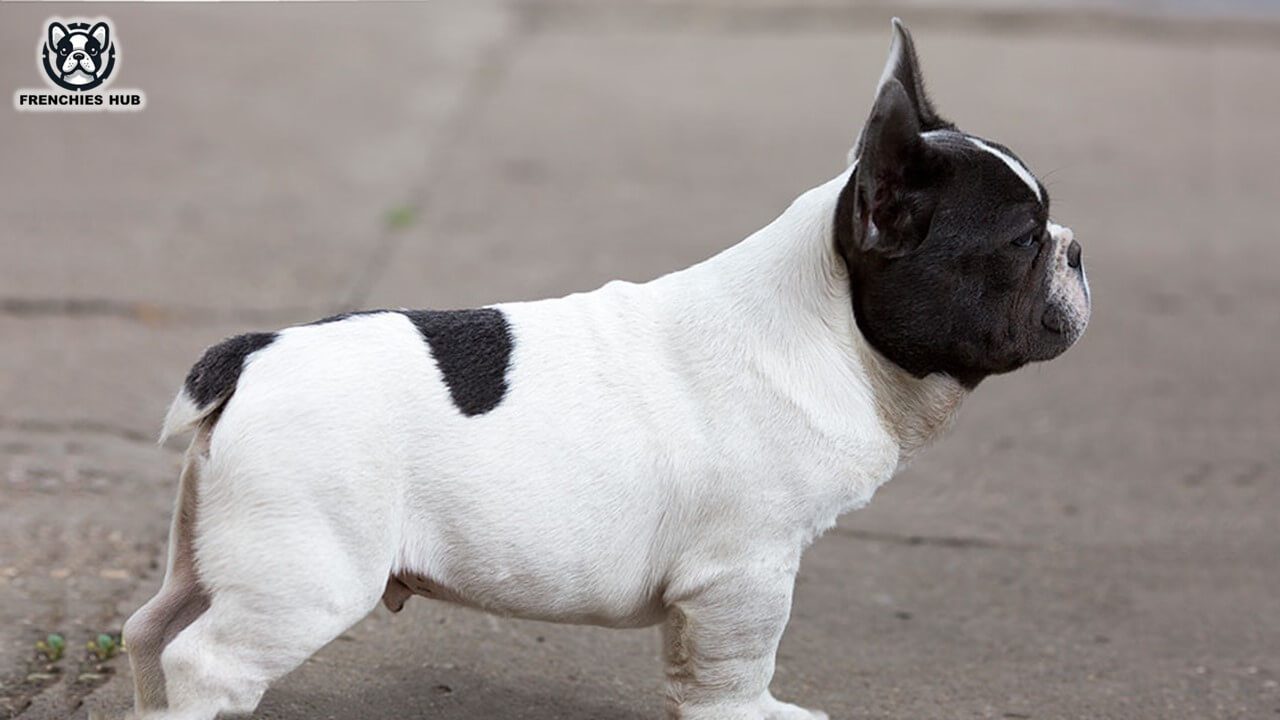Debunking the Myth: French Bulldogs and Tail Docking
When discussing whether French Bulldog tails are docked, it’s essential to understand that these chubby tails are a natural trait of the breed. Contrary to some beliefs, these tails are not artificially shortened; rather, they are naturally short, a feature developed over time. Historically, the French Bulldog’s tail was shaped through cross-breeding and interbreeding with other short-tailed dogs, such as terriers and pugs. This practice was common in the early days of the breed’s development in Britain and France, giving them their distinctive look today.
Their tails sit snugly over their rectum, which, while adorable, can sometimes pose an obstacle during their wilderness poo adventures. It’s a quirky yet endearing aspect of their physiology that Frenchie’s owners are all too familiar with. When these dogs relieve themselves, their tails may not efficiently clear the way, which means owners often need to use a human/dog approved moist wipe (often a baby wipe) to help prevent any unpleasant detritus from sticking around.
Indeed, Frenchies are talented poopers, and they often strike a hilarious pose when doing their business, adding to the endless charm that dog lovers cherish. Their unique bathroom habits, coupled with their expressive postures, endear them to their human companions, who often find humor and joy in the simple routines of pet care.
This intimate part of living with a French Bulldog showcases the unique adaptations and historical traits of this beloved dog breed. It’s these moments, from the necessary wipe to their amusing bathroom stance, that create lasting memories for their owners.
Origins of the French Bulldog Tail: A Breeding Perspective
The French Bulldog’s tail is deeply rooted in a rich breeding history that combined miniature bulldogs with various ratters. This specific blend aimed to incorporate the ratters’ traits, known for their short, sturdy tails, into what would become a defining feature of the French Bulldog. Such strategic crossbreeding helped develop the French Bulldog as a distinct breed, merging the physical and temperamental qualities of its ancestors.
Characteristics of Ratters
The chosen ratters were typically dogs with short-haired, smooth coats, highly effective at managing rodents and vermin in urban environments. These smaller breeds, including rat terriers and miniature pinschers, were selected for their agility and ability to navigate cramped spaces, crucial for pest control.
Historical Breeding Preferences
The breeders of the time had a clear preference for dogs with ears that stood up, such as yorkies and other terriers. This preference was believed to enhance the dogs’ vigilance and adaptability to the bustling city life, thereby improving their efficiency as working animals in pest control.
Tail Features and Utility
The French Bulldog’s tail was designed to be functional—a short, sturdy appendage that could be gripped and used to lower the dog into small spaces like manholes and beneath city infrastructure. This practice was not only commonplace in the late 1880s but essential for urban sanitation and safety, allowing these dogs to access areas that were otherwise unreachable by humans.
Handling and Care
Today, it is important to recognize that despite its historical utility, the French Bulldog’s tail is not meant for handling. Attempting to pick or maneuver a French Bulldog by its tail could seriously harm this companion animal. The modern French Bulldog’s tail is delicate and should not be subjected to any pressure or tension.
Genetic Traits
The current tiny, stumpy tail of the French Bulldog is a genetic trait passed down from its ratter counterparts. While it serves no current functional purpose, this naturally occurring, stumpy appendage remains a quaint remnant of its ancestors’ design, adding to the breed’s unique charm and appearance.
Conclusion
The tale of the French Bulldog’s tail is one steeped in history and shaped by centuries of cross-breeding and interbreeding. Contrary to what some might think, these tails are not docked; they are a natural trait of the breed, developed over time through careful selection and breeding practices. Originating from Britain and France in the early days of the breed’s history, the French Bulldog’s tail is a product of its ancestors—particularly terriers and pugs—known for their short-tailed appearance.
These dogs, with their naturally short tails, serve as a quirky but charming example of how selective breeding can influence physical traits. The tail sits just over the rectum, occasionally becoming an obstacle when these talented poopers set out to do their business in the wilderness. As a result, owners often find themselves equipped with a human/dog approved moist wipe—commonly a baby wipe—to prevent any detritus from sticking around.
Despite the hilarious pose they might strike while relieving themselves, it’s essential to recognize this characteristic as a natural part of the breed’s charm, not a result of human modification. This understanding is crucial to ensure that these chubby, beloved creatures are treated with the respect and care they deserve, without misconceptions leading to potentially harmful practices.

